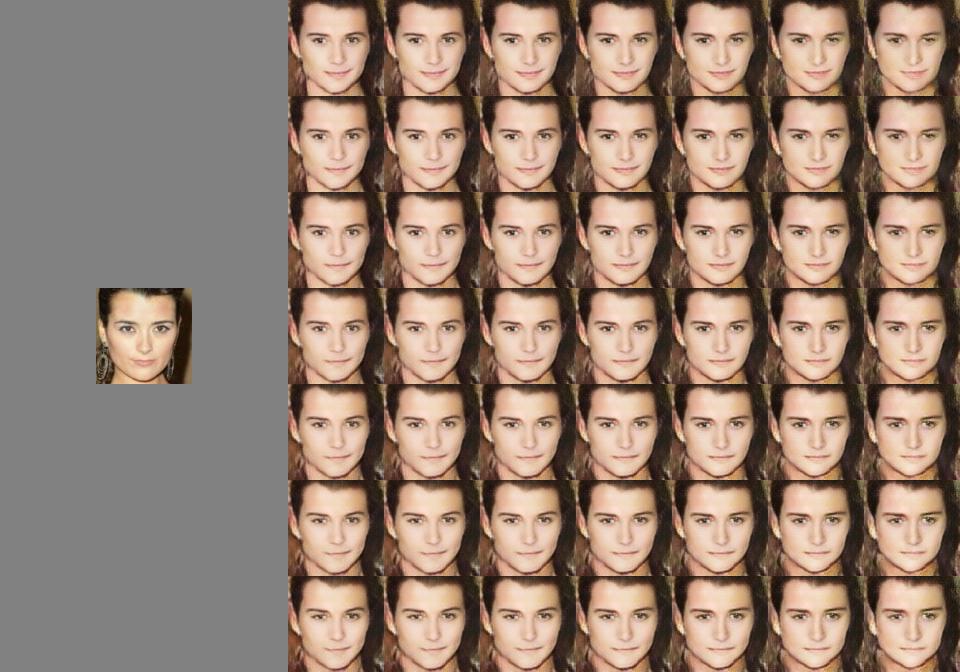Training and testing model presented in the following publication:
- Model for the paper: Lindt, A., Barros, P., Siqueira, H., & Wermter, S. (2019, May). Facial expression editing with continuous emotion labels. In 2019 14th IEEE International Conference on Automatic Face & Gesture Recognition (FG 2019) (pp. 1-8). IEEE.
Install the requirements from the Requirements.txt file.
we explore how continuous emotion representations can be used to control automated expression editing. We propose a deep generative model that can be used to manipulate facial expressions in facial images according to continuous two-dimensional emotion labels. One dimension represents an emotion’s valence, the other represents its degree of arousal.
The Experiments folder holds our experimental setup routine. Faces are edited using our proposed network and a range of arousals and valences.
##Trained Network
We provide a trained network that can be evaluated by running the editFaces.py script.
All the examples in this repository are distributed under a Non-Comercial license. If you use this environment, you have to agree with the following itens:
- To cite our associated references in any of your publication that make any use of these examples.
- To use the environment for research purpose only.
- To not provide the environment to any second parties.
-
Barros, P., Parisi, G., & Wermter, S. (2019, May). A Personalized Affective Memory Model for Improving Emotion Recognition. In International Conference on Machine Learning (pp. 485-494).
-
Lindt, A., Barros, P., Siqueira, H., & Wermter, S. (2019, May). Facial expression editing with continuous emotion labels. In 2019 14th IEEE International Conference on Automatic Face & Gesture Recognition (FG 2019) (pp. 1-8). IEEE.
Pablo Barros - pablo.alvesdebarros@iit.it

